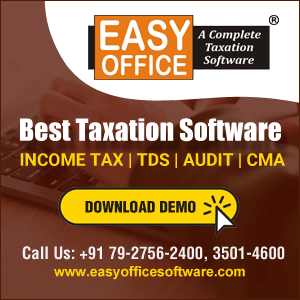Have a look at this extract from today's Business Line:
Auditor’s responsibility for inventory
The auditor must examine the inward and outward movement of stocks from the cut-off date till the date of physical count to establish the validity of the data as on the year-end date.
M. V. Kali Prasad
Stocks constitute an important segment of current assets, thereby imposing a responsibility on the auditor to ensure that they are properly disclosed in the financial statements.
The auditor is required to be present at the time of counting of inventories to ensure that they exist and to assess their condition.
Inventory means any stock held by an entity for resale or use in the course of manufacture of goods.
Management vs auditor
Physical verification of inventories is the responsibility of the management of the entity. It is up to the management to establish procedures for counting of inventories at least once in a year to serve as a basis for preparation of financial statements.
The auditor has to carry out audit procedures to obtain sufficient and appropriate audit evidence during his attendance at the time of counting of physical inventory.
The auditor should be physically present to count and inspect the inventory and to assess whether the procedures laid down by the management to record and control the results of the counting are being complied with and to decide the reliability of such procedures.
If the auditor is unable to attend the counting of the inventory, he should be present on an alternative date and decide upon alternative measures to assess whether the changes in the inventories between the year end and the date of physical count are correctly recorded.
He should consider whether alternative procedures provide sufficient and appropriate audit evidence regarding the existence and condition of the inventory.
The auditor must examine the inward and outward movement of stocks from the cut-off date till the date of physical count to establish the validity of the data as on the year-end date.
Counting preparations
The auditor should consider the following aspects while planning attendance at the physical counting:
Nature of the inventory and the auditor’s knowledge of the inventory.
Whether the assistance of an expert is needed at the time of physical count.
Existence and effectiveness of the accounting and internal control systems regarding inventory.
Materiality of the inventories and the audit risks attached (inherent, control as well as detection risks) to inventory.
Various locations where the inventory is held and the timing of the counting at each location.
In case of multiple locations, the auditor might require staggering of counting at various locations. In such a situation, he should ensure that there is no movement of inventories from one location to another.
Auditor’s responsibility
The auditor should review the instructions of the management and the internal controls regarding the stock sheets, tagging, counting and re-counting of stocks; identification of slow moving, obsolete, damaged or rejected items of inventory; valuation of work-in-progress; cut-off procedures; and movement of inventories between the cut-off date and the date of physical counting.
The auditor should consider the cut-off procedures and ensure that the inclusion and exclusion of stocks as on the year-end date is appropriate and is justified.
Different situations
In case of perpetual inventory system is in place: Where the auditor attends the periodical physical count or when a perpetual inventory system is in operation, the auditor may observe the count and perform test count of inventory. The auditor should carry out audit procedures to assess whether any material differences between the physical count and the inventory records are understood and necessary adjustments are made.
Where the inventory is estimated: In case the inventory is based on an estimate, such as coal, ore, etc., the auditor should be satisfied about the estimate of the quantity and the reasonableness of the procedures.
To ensure adequate compliance with the procedures laid down by the management, the auditor should observe the physical verification procedures performed by the employees of the entity and carry out certain test counts. During this process, the auditor should carry out a two-way check from inventory sheets to the count records and vice versa.
In case tagging is used, the auditor should seek a tagging reconciliation before finalising the count. The auditor should decide whether copies of such count records are to be retained for subsequent use.
Where the control risk is assessed as less than high, physical count may be conducted at a date other than the year-end date. By carrying out appropriate audit procedures, the auditor would assess whether the changes between the count date and the period end are correctly recorded.
Third party’s inventory Where inventory is held by a third party, the auditor should seek direct confirmation from them on the quantities and condition of the inventory held on behalf of the entity. In such a situation, depending upon the materiality of such inventory, the auditor should consider the following aspects: Relationship with the entity and the independence of the third party. Observe, directly or through another auditor, the physical inventory count. Ensuring adequacy of the third party’s accounting and internal control procedures for correctness of the counting. Inspecting documentation such as delivery notes, warehouse receipts, take delivery letters, etc. The auditor should seek management representation about completeness of information regarding inventory and assurance regarding compliance with the procedures laid down for physical inventory count. Audit procedures should be carried out on the final inventory statements to ensure that it reflects actual inventory counts. Conclusions, reporting Where the auditor is unable to obtain sufficient and appropriate evidence regarding the existence and condition of the inventory or delinquent procedures for physical counting, the auditor should make a reference to a scope limitation in his audit report. In case the inventory is not appropriately disclosed in the financial statements, the auditor should issue a qualified opinion.









 CAclubindia
CAclubindia
